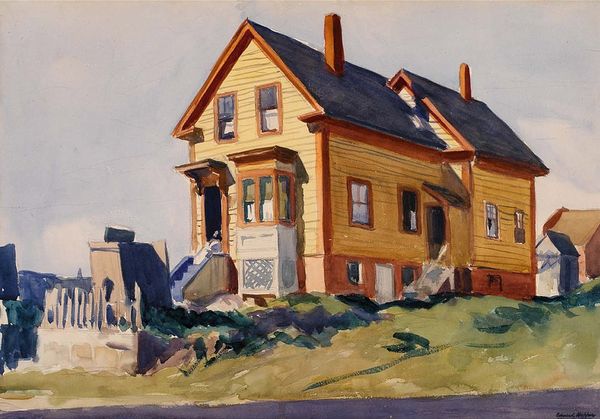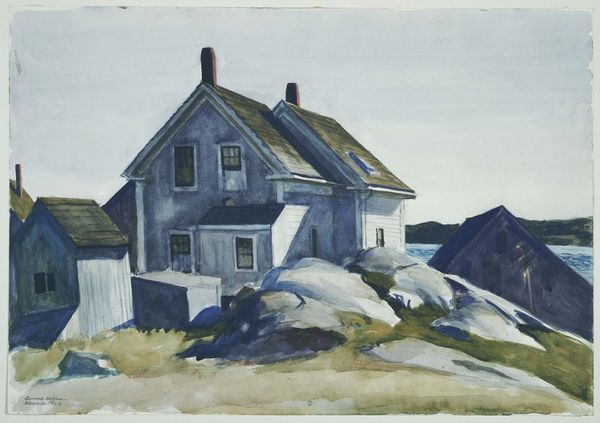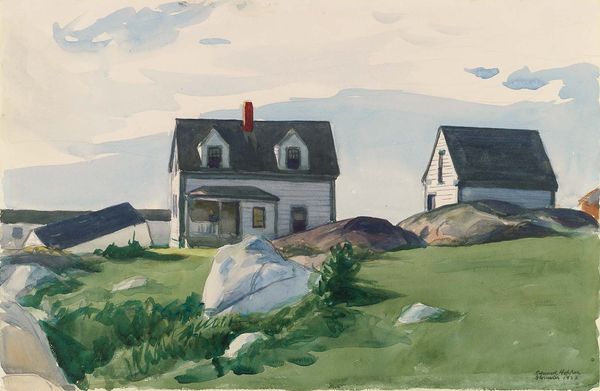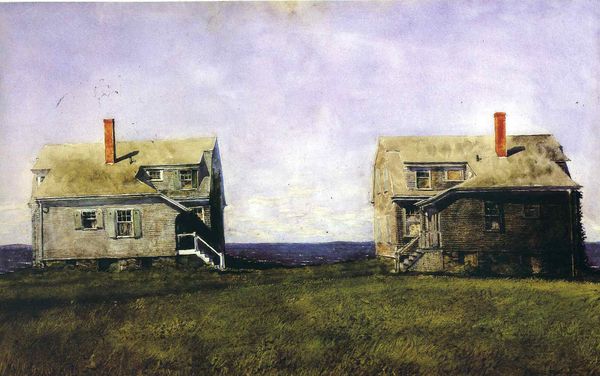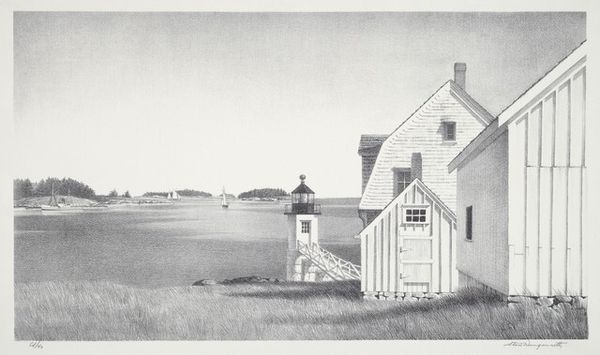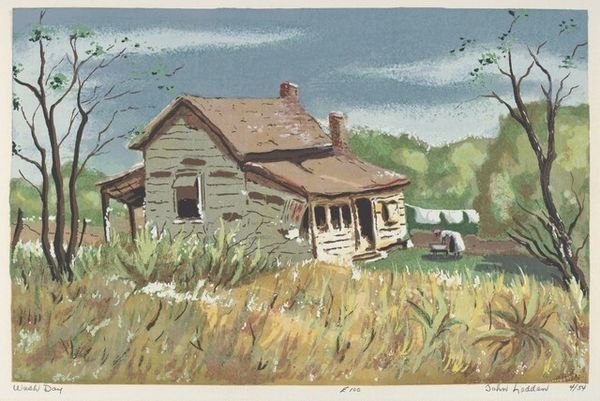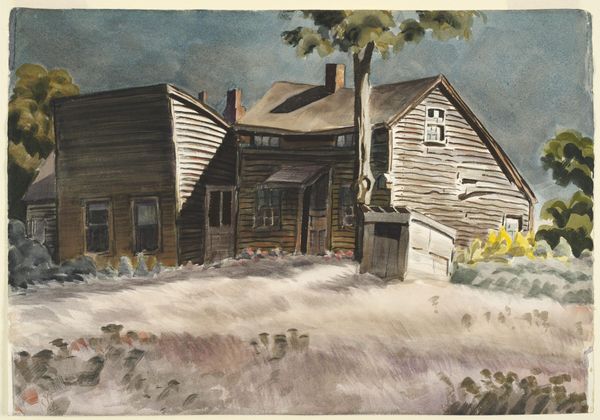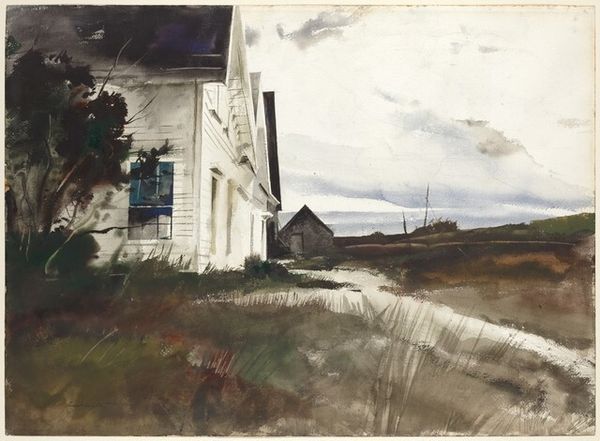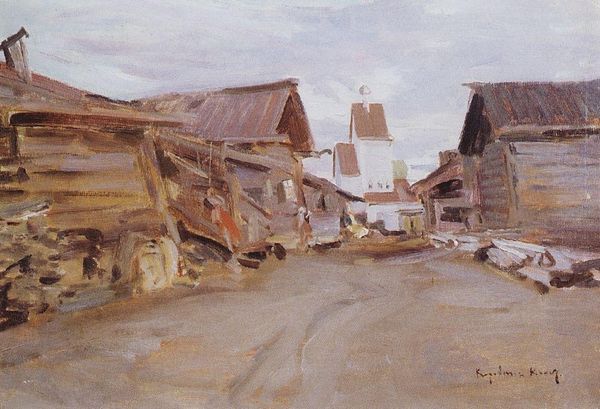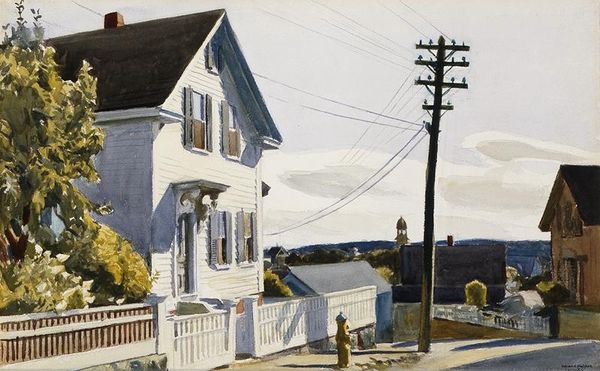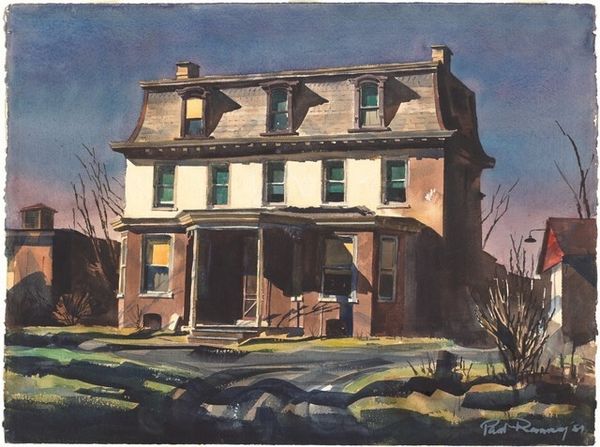
plein-air, watercolor
#
plein-air
#
landscape
#
oil painting
#
watercolor
#
cityscape
#
watercolour illustration
#
green and neutral
#
modernism
#
watercolor
#
realism
#
building
Dimensions: 34 x 69.9 cm
Copyright: Edward Hopper,Fair Use
Curator: Here we have Edward Hopper’s “Gloucester Mansion,” created in 1924. What are your initial thoughts on this piece? Editor: It's surprisingly serene. Hopper’s work is often about alienation, but here, the focus on craft – I mean, you can practically smell the damp wood and the linseed oil in the watercolor – seems to pull you toward the process rather than some psychological drama. Curator: That's interesting! The way he uses light, especially the muted tones, definitely sets a mood. Hopper was known to spend quite some time in Gloucester during the 1920s, and many have mentioned that, unlike some of his later urban scenes, there’s almost a tenderness to his rendering of these buildings. What strikes me most is the figure almost hidden in the doorway—he invites all sorts of speculation! Editor: Exactly. Think about the physical act of painting *en plein air,* as he was doing here. The labour involved, battling the elements to capture the essence of this place—Gloucester itself, as a working port, it’s a town built on physical work. Those buildings are weather-beaten, salt-sprayed… they tell a story of material reality, of labor and time, more than isolation to me. It’s about what endures through touch. Curator: I get what you mean. Perhaps the story *is* in the very tangible qualities— the sun-bleached wood, the chipped paint, and that beautiful sweep of green grass against the starkness of the buildings. The fact it’s watercolour as well adds another layer. It doesn't hide its process. You see it all; there's nothing hidden. Editor: Right! Watercolor's immediacy… It refuses artifice. This building, this landscape isn’t grand; it’s worked, worn down, like its residents, its trades. Hopper's engaging in the tangible details of their ordinary experiences in a tactile way that emphasizes materiality and place over emotional alienation. Curator: That’s a different way to read the light! Thank you. I think, overall, it comes down to the way Hopper frames our reality that always challenges me, makes me look at it again. Editor: Precisely. Art history's never just *art* history.
Comments
No comments
Be the first to comment and join the conversation on the ultimate creative platform.
